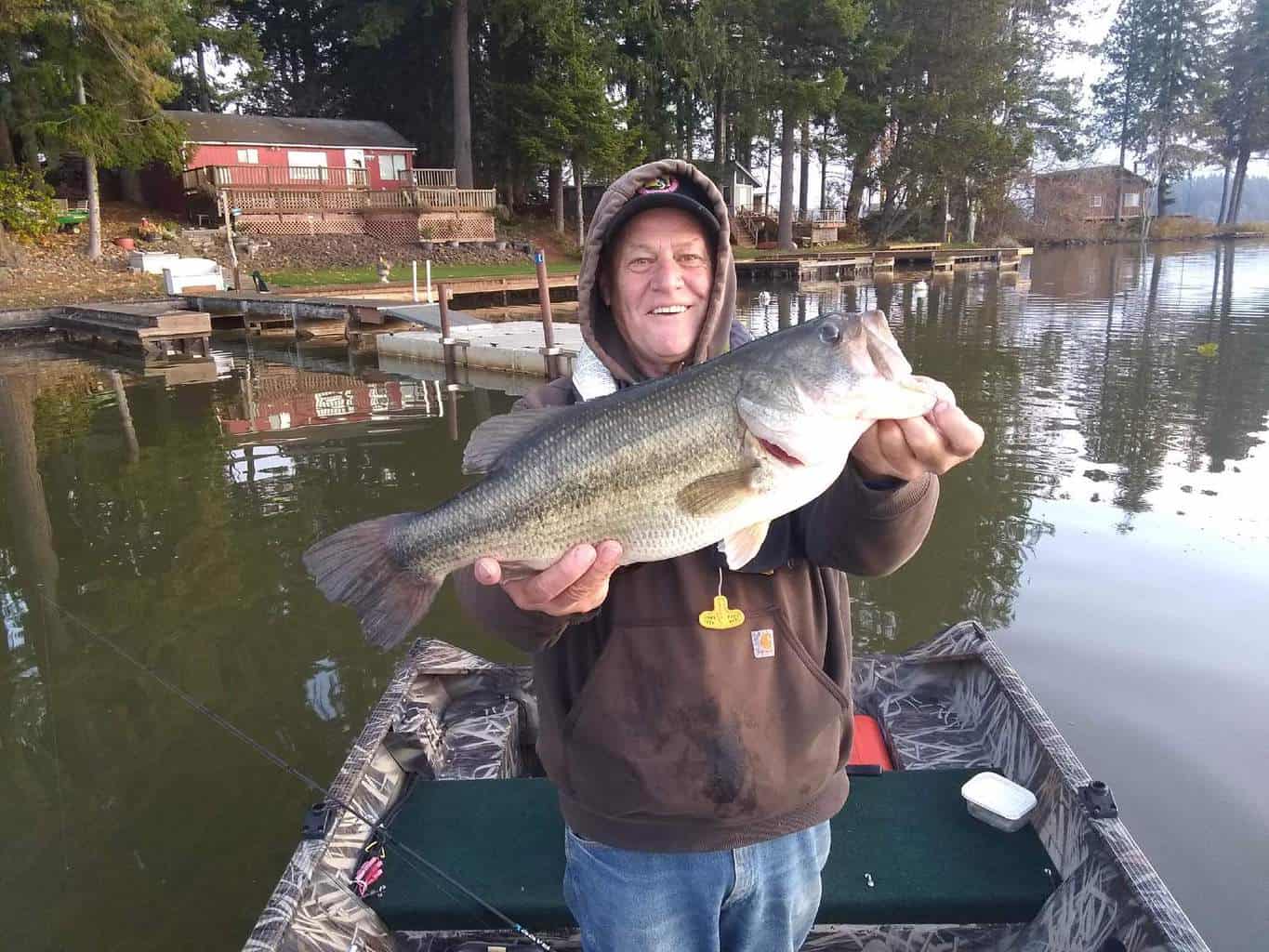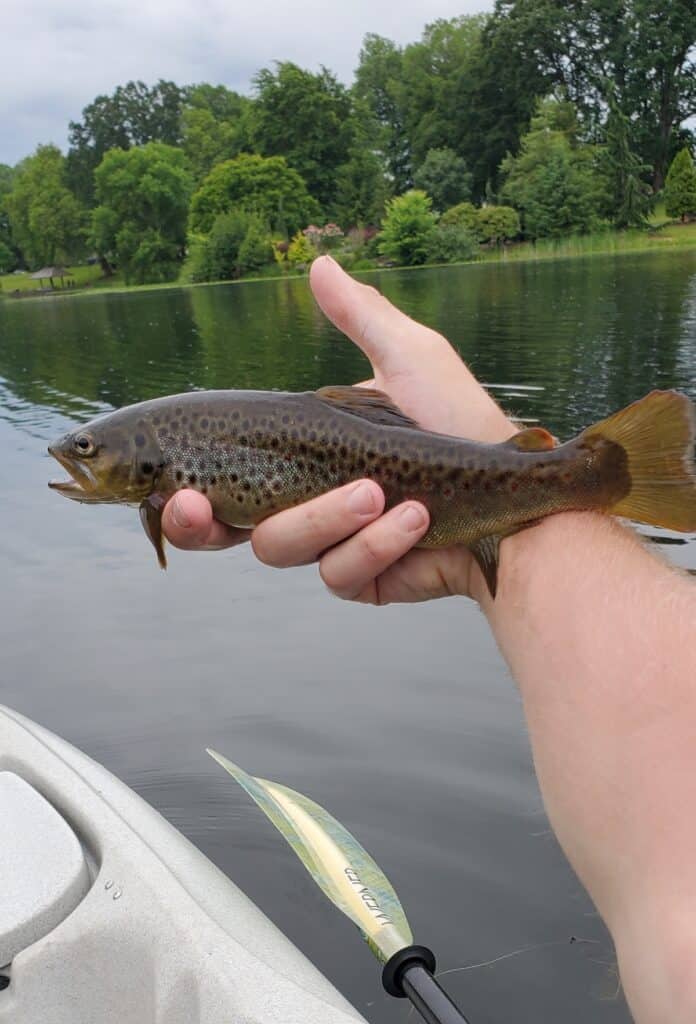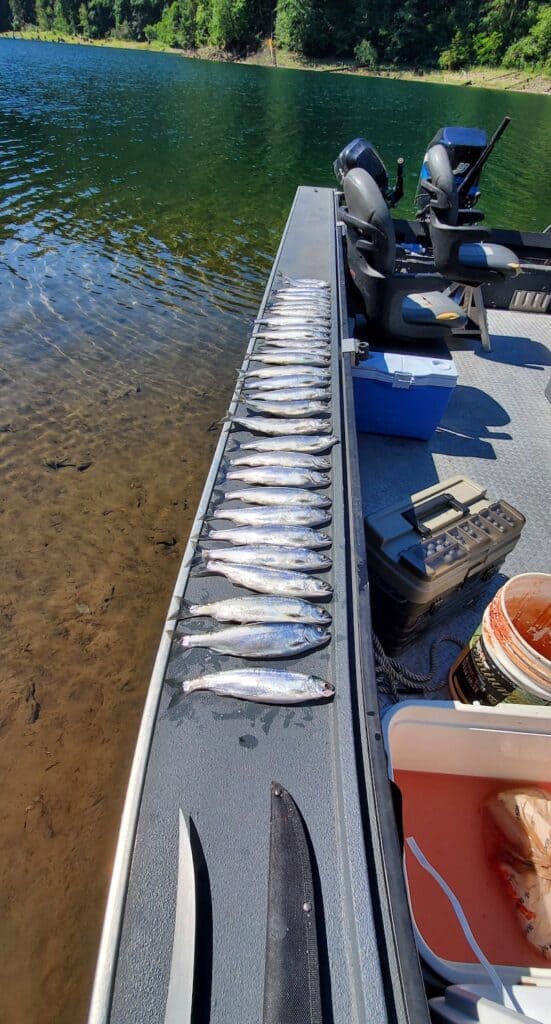There is ton of amazing fishing near Longview, Kelso and Castle Rock in Cowlitz County, well beyond the great salmon and steelhead angling in the Cowlitz and Columbia rivers.
This article also will talk about the best fishing spots near Cathlamet and other locations in neighboring Wahkiakum County, one of state’s smallest counties both by population and size located just down the Columbia River and within a short drive from Longview and elsewhere in Southwest Washington.
Other communities in Cowlitz County include Kalama, most of Woodland and a bunch of smaller communities scattered around the river valleys and forested hills.
Besides Cathlamet, the small number of residents in Wahkiakum County are scattered around from Puget Island, Skamokawa, elsewhere along Highway 4 (Ocean Beach Highway) and up into several river valleys.
Together, the counties stretch between the high Cascade Mountains on the east to the coastal Willapa Hills and the top of the Columbia River estuary to the west.
For many non-anglers, Cowlitz County is these days perhaps best known as the gateway to the Mount St. Helens National Volcanic Monument, definitely worth a visit for its stunning landscapes (including the amazing vista of the mountain itself) and museums showing the incredible devastation of the 1980 eruption and the ongoing rebirth of this area.
For anglers, there are rivers and lakes galore in these two counties, and several of them are easily among the “best of” for different types of fishing in all of Washington.
We’ll divide up the two counties in the listings below to help keep you oriented.
Before we get there, we also suggest that after you’ve explored the best waters in Cowlitz and Wahkiakum counties, stick around for the “Fishing in Neighboring Counties” feature below. These links will take you to great fishing just a short drive from Longview and Kelso.
Cowlitz County Fishing
Abernathy Creek
A small stream entering the Columbia River in western Cowlitz County, home to the Abernathy Fish Technology Center, Abernathy has a modest and mostly catch-and-release fisheries for trout, steelhead and salmon.
Check current regulations carefully and release wild salmon and steelhead, which will be what you are most likely to catch, other than rare strays.
Castle Lake
You’ll have to hike in, so it’ll take some work, but Castle Lake offers good bank fishing access and some good-sized rainbow trout in the Mount St. Helens blast area once you get there.
Castle was formed when the 1980 eruption caused a debris flow that blocked Castle Creek, and trout may have moved in from Coldwater Lake (see separate listing) located to the north. The trout now reproduce naturally here.
There are some cutthroat trout in Castle Creek.
Coal Creek and Coal Creek Slough
The creek, which flows directly into the Columbia River west of Longview, offers up a bit of cutthroat trout fishing and the rare stray hatchery steelhead.
The slough has the typical lower Columbia River backwater mixture of largemouth bass, crappie, yellow perch and bullhead catfish, plus aggressive northern pikeminnows.
Coldwater Lake
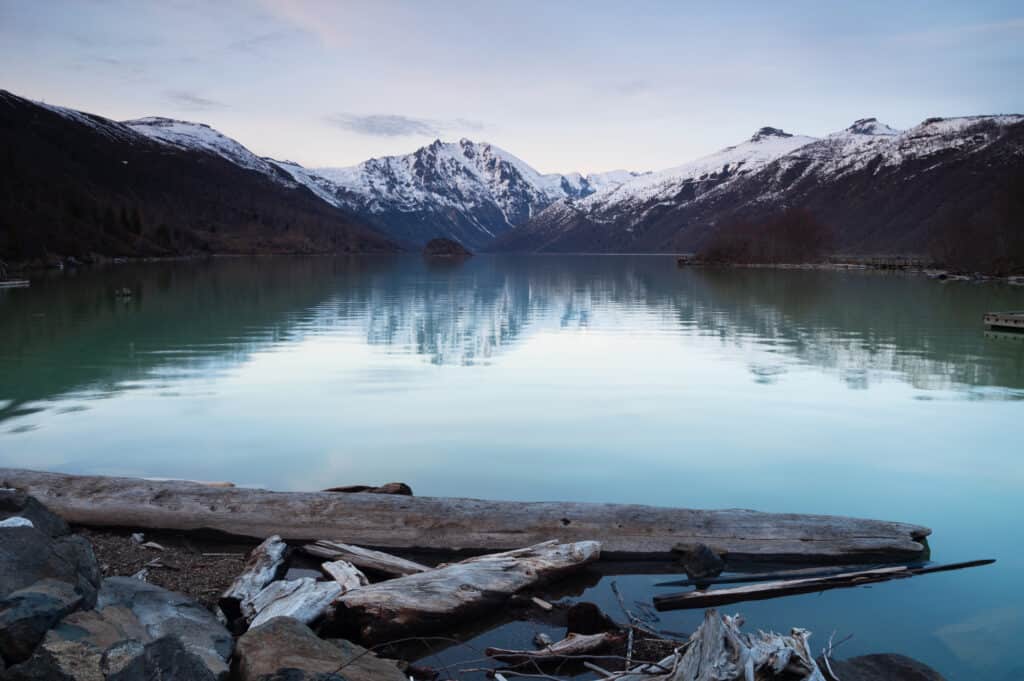
This is another lake formed by a debris flow from the 1980 eruption of Mount St. Helens that has become an excellent trout-fishing destination.
For such a young lake, Coldwater quickly joined the ranks of Washington’s better large-trout waters after the WDFW stocked fingerlings starting in the decade following the blast.
The lake, shared with Skamania County, currently hosts rainbows as well as cutthroat trout that were native to Coldwater Creek. Both reproduce naturally to help repopulate the lake.
You’ll have to release most fish, as there is a strict one-fish per day limit and that one has to be at least 18 inches. It most likely will be a big rainbow. Selective gear rules apply.
This is a pretty big lake (773 acres) that has drive-up access only at the southwest end, just off State Route 504. At this end you’ll find a limited number of designated bank access spots where you can fish.
There’s also a ramp to launch a small boat, in addition to day-use facilities including picnic spots.
Boaters and float-tubers have two miles of lake to explore, but note that gas motors are strictly prohibited so you’ll have to row or kick … or at least use an electric motor.
Also, note that Coldwater Creek and all inlet or outlet streams are strictly closed to fishing.
Columbia River
The lower Columbia River bordering Cowlitz and Wahkiakum counties is most enthusiastically fished for salmon, especially the runs of Chinook salmon that come up the big river, both those turning into tributaries and those on their way farther upriver.
The first salmon of the year typically arrive in reasonable numbers during March (although die-hards start chasing them even earlier), while April generally produces the best results for spring Chinook.
There’s a smaller summer-run of Chinook, but small doesn’t describe these fish, which can be among the largest found anywhere.
The summer fish typically come in best around June, which together with their size is why locals call them “June Hogs.”
The fall Chinook run is the largest in numbers of all, and the fish aren’t bad size either, with some going 30 pounds or better.
The fall run in this lower reach picks up speed during August and keeps going strong into September. By October most of the action is farther upriver or in coastal bays.
A more modest number of coho enter the catch in this part of the river during the same period as the Chinook, and they in fact are often caught by anglers focused on the bigger salmon.
Steelhead also come up the Columbia, with both summer and winter runs using it as their freeway to smaller tributaries as far upstream as Idaho.
Steelhead fishing is a much more modest pursuit than salmon, but both bank and boat anglers have a reasonable shot at these shallower-swimming oversized rainbow trout. Bank anglers often stake out a spot on beaches including Willow Grove in Cowlitz County and Puget Island in Wahkiakum County.
While the winter run isn’t fished much at all in the big river (the tributaries are the place for that), summer steelhead are caught in moderate numbers during June and July, including off beach areas in these two counties.
Sturgeon are present throughout this section of the river, but fishing for them is a fairly low-numbers affair since the states turned this into largely a catch-and-release fishery. There have been a few days of open fishing in designated areas on the river.
While walleye an smallmouth bass are big-time targets farther up the river, they are lesser factors in the fishing in these lower reaches
That’s not to say you won’t catch those warmwater species in addition to largemouth bass, crappie and other panfish.
Much of the warmwater fishing here is focused on the sloughs and other slow-water areas on the insides of islands and smaller creek mouths, rather than out in current.
Much more on this river’s fishing options: Columbia River Fishing
Coweeman River
This tributary of the very lower Cowlitz River, flowing alongside Kelso on the way, can produce a modest number (sometimes just a few dozen) marked steelhead in a winter season.
It used to be a pretty good salmon and steelhead stream but today gets a relatively small plant of fin-clipped winter steelhead smolts.
There also is some fishing for wild cutthroat trout.
Read your regulations carefully.
The Coweeman River’s headwaters are Coweeman Lake in the mountains east of Kelso. It has some cutthroat trout fishing.
Cowlitz River
This is one of Washington’s powerhouse salmon and steelhead tributaries, flowing past Castle Rock, Kelso and Longview on its way to the Columbia River.
The Cowlitz County section is a good-sized river that carries the large runs up into Lewis County.
The Cowlitz itself headwaters in the Mount Rainier area clear up in eastern Pierce County, but major tributary Toutle River originates in the Mount St. Helens area.
While some of the most productive (and crowded) spots for salmon and steelhead are in Lewis County, the salmon and steelhead also are caught migrating through the lower two dozen miles in Cowlitz County.
Chinook come in both the spring and the fall, with the spring run typically the better of the two fisheries here.
The first springers come into the system during March, but April, May and into June are the better months for tagging fish.
The fall Chinook runs are more modest most years, with the best catches around September.
Fall Chinook overlap with often bigger runs of coho, although the latter “silvers” typically are migrating upriver a bit better by October.
The Cowlitz has both summer and winter steelhead runs.
The first summer fish start appearing in May and June, especially in the lower river, although overall Cowlitz catches are better in July and August.
Winter steelhead tend to run fairly late here, with catches usually best in March and April.
Sea-run cutthroat trout appear in the lower river during the late winter and early fall but often get second billing to the steelhead and salmon arriving with them.
Because it has runs of steelhead, coho and cutthroat, the Cowlitz can be a pretty good fly fishing river.
In the old days, smelt made massive appearances in the Cowlitz during the late winter, setting off a frenzy of dipping for these silvery fish in the Kelso and Longview areas and up to Castle Rock.
These days, there tends to be enough smelt to dip only during years of relative abundance. The WDFW announces “emergency” seasons only when there are enough smelt to justify a fishery, which is often shortly before the limited fishery opens.
Sturgeon sometimes make their way into the lower river, especially around Kelso, but they must be released unharmed if you catch one of any size.
More: Complete Guide to Cowlitz River Fishing
Horseshoe Lake
This is a former bend in the Lewis River that offers excellent seasonal fishing for plentiful stocked trout (lots of rainbows and often some browns).
During the warmer months, you’ll find fair to good fishing for bass and panfish species.
Access really couldn’t be better here, with lots of bank access and a boat launch in a city park located in Woodland right off Interstate 5, right between Vancouver and Longview-Kelso.
More: Fishing at Horseshoe Lake in Woodland
Kalama River
This is a smallish river with big potential for salmon and steelhead fishing.
Located near Kalama, on Interstate 5 between Longview and Woodland, the river has some sort of salmon or steelhead run available pretty much all year long, with good numbers of hatchery fish.
True, the Kalama isn’t what it used to be (what local salmon and steelhead river is?). Anglers of a certain age will remember incredible catches in the 1960s through 1980s.
While those kinds of catches aren’t the norm today, this is still a good place to fish.
Look for spring Chinook to start arriving in the lower river in April but catches will likely be better in May and June. By June, you’ll probably do better closer up toward Kalama Falls Hatchery.
There’s also a worthwhile fall Chinook fishery here, with the best catches likely to be in September.
Coho catches have been fairly light here recently.
There also are two runs of steelhead in the Kalama.
The summer fish arrive in earnest during May and June and fishing typically holds up pretty well into July and August.
You can even do pretty well for summer-runs in September and October, when the majority will be upstream closer to the hatchery rather than below Modrow Bridge.
Read the regulations carefully for whatever sections of this river you plan to fish, as there are plenty of them.
Also note minimum size requirements for trout and tributary closure information.
McBride Lake between Ape Cave and Goat Mountain is the headwaters of the Kalama and has some brook and cutthroat trout.
More: Kalama River Fishing
Kress Lake
While fishing in an old gravel pit doesn’t sound like an idyllic pastime, Kress Lake near Kalama might be a pleasant surprise.
This lake is very nicely stocked with catchable rainbow and brown trout during the cooler seasons, and even might get giant brood trout, salmon and steelhead on occasion.
Kress also is quite a good warmwater fishery, as WDFW tries to maintain a fishery for tasty channel catfish with occasional plants.
There also is a pretty good population of largemouth bass and a variety of panfish to keep the action going in the hotter months when trout aren’t available.
More: Kress Lake Fishing
Lewis River
This river mainstem, locally called the North Fork, forms the boundary with Clark County to the south.
It is the most heavily fished fork of the Lewis, compared to the smaller East Fork located in Clark County.
The North Fork below its series of reservoirs tends to be the larger producer of salmon and steelhead.
The North Fork has runs of both fall and spring Chinook and also fall coho.
The fall run on the North Fork is likely to be the larger return most years, with best fishing in September and October, with some catches into November. Coho salmon are caught during the same time frame here.
The spring Chinook returns have been somewhat depressed in recent years, but some are available and these are a highly prize hatchery-bred fish.
Salmon runs are highly cyclical, so when these fish return to abundance, the Lewis will be one of the places to reliably catch them.
Expect Lewis River springers to peak in June.
There are runs of both summer and winter steelhead in the North Fork. The catches of summer fish tend to ramp up in June, peak in July and maintain a decent level into August and early September.
The North Fork’s winter steelhead runs often peak in December around the holidays and continue to offer fair (sometimes good) fishing into January.
The middle section of the North Fork is noteworthy by its series of dams forming Merwin Lake and Yale Lake bordering Cowlitz County, as well as Swift Reservoir upriver in Skamania County.
More: Lewis River Fishing
Merrill Lake
This is a fly angler’s go-to spot in Southwestern Washington.
Conventional angling techniques are banned here, and also you must release everything you catch, which could include several kinds of trout.
Merrill is located just north of the community of Cougar and Yale Lake.
The 280-acre lake was formed naturally by an old lava flow from Mount St. Helens, long before the 1980 blast that impacted areas to the north far more severely.
Merrill has been planted with a variety of trout through the years, including rainbows and browns that grow to pretty good size.
There also are coastal cutthroat trout here, and WDFW mentions brook trout among the fish you might catch, although the other species are the primary focus.
Most people access the lake from the Cougar side, although come up the Kalama is a rougher option.
There is pretty good shoreline access, especially late in the season when the water level drops off a bit and the hatches pick up.
You also can launch a small boat, kayak, canoe and certainly a float tube, but know that gas motors are strictly prohibited here.
Look for Merrill Lake Campground and the main launching area off Forest Road 81 on the east shoreline.
Merwin Reservoir
Most anglers come to this big impoundment (3,800 acres), also known as Lake Merwin, to either catch kokanee or try their hand at fooling big tiger muskies.
This reservoir is the lowest of three big impoundments on the Lewis River, and it is shared with Clark County.
The kokanee are a trout-sized land-locked sockeye salmon known for being feisty and quite tasty and traveling in large schools.
They are planted here as young fish and grow to catchable size feeding largely on plankton, but they are aggressive enough to strike different offerings.
They are often caught by trolling small lures and jigs.
Tiger muskies were introduced here and elsewhere in Washington to control non-game fish species that tend to overrun some waters.
Merwin is considered one of the better tiger musky fisheries in the state.
Here the issue was too many northern pikeminnows, which gobble up smaller game fish and can harm recreational fisheries.
Tiger muskies, a sterile hybrid of a true musky and northern pike, grow to massive size and are primarily a catch-and-release fish for serious anglers. They are hard to catch but will strike large plugs and spinners that look like forage fish.
See more in our Best Tiger Muskie Fishing in Washington article.
More: Lake Merwin Fishing
Sacajawea Lake
The locals know it as Lake Sacajawea, “Lake Sac,” or simply “The Lake,” and this all-around gem of a city park in the heart of Longview also is home to some pretty decent fishing.
The main fishing fuss is generally about the regular trout plants Sacajawea during the cooler seasons, with lots of rainbows, a fair number of browns, and even the occasional brood trout or hatchery steelhead for a giant thrill.
The lake also is home year-round to a collection of largemouth bass and various panfish, which tend to bite best starting in the spring as trout fishing winds down and continuing throughout summer and into early fall.
If you see some giant shadowy fish swimming not far under the surface, often in small groups, don’t get too excited, especially in the summer. Those probably aren’t state record bass or transplanted steelhead … they are almost certainly some of the Asian grass carp planted in Sacajawea to keep the aquatic plants from taking over.
You may not deliberately fish for Asian carp and must release them unharmed if you accidentally catch them. Believe us, they are keeping the lake fishable.
More: Lake Sacajawea Fishing
Silver Lake
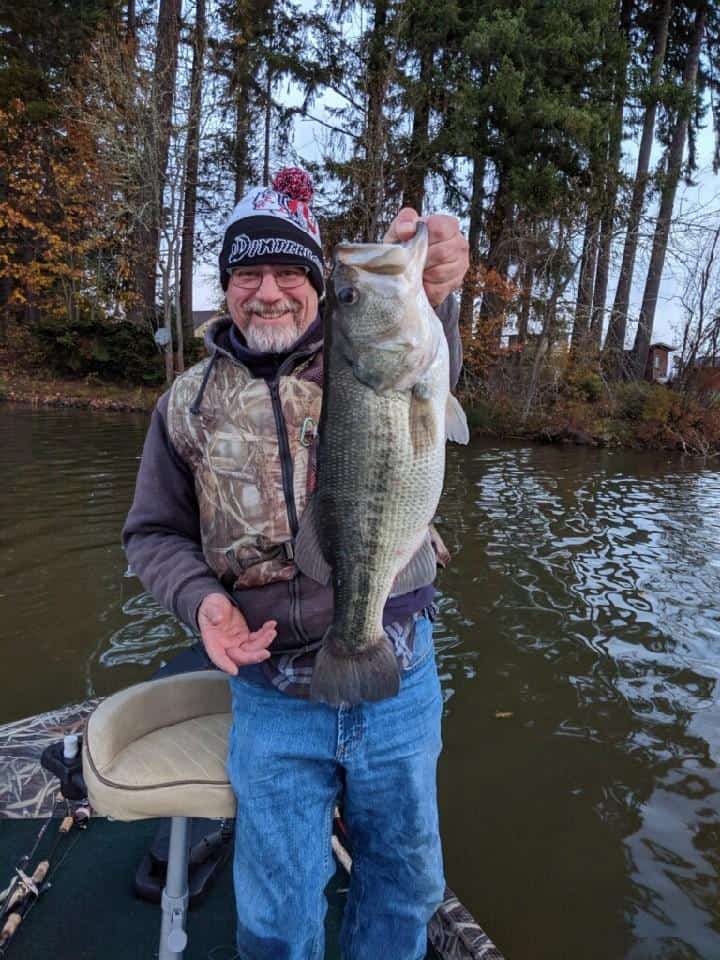
This is Southwest Washington’s premier warmwater lake and one of the best spots to catch big largemouth bass in Washington and the Pacific Northwest.
Locals might hate us for saying this, but Silver Lake is also the best bass lake less than a two-hour drive from the Portland-Vancouver area.
This is a big lake in acreage (about 3,000 acres) but it’s also quite shallow, with absolutely tons of cover that bass, crappie and other warmwater fish species seek.
There are lots of lily pads and other aquatic plants, docks, island, coves, downed trees, and on and on.
This is a sprawling place, and a boat will definitely serve you well. There are a few spots with decent bank access.
Bass anglers come here in pretty good numbers, so don’t expect to have the place to yourself. The big bass also have seen it all, so you’ll have to step up your game to fool them. And please release them.
Panfish angling can be quite good here, with excellent catches of crappie, bluegill, yellow perch, bullhead catfish and other species possible starting in the spring, going through summer and into the fall.
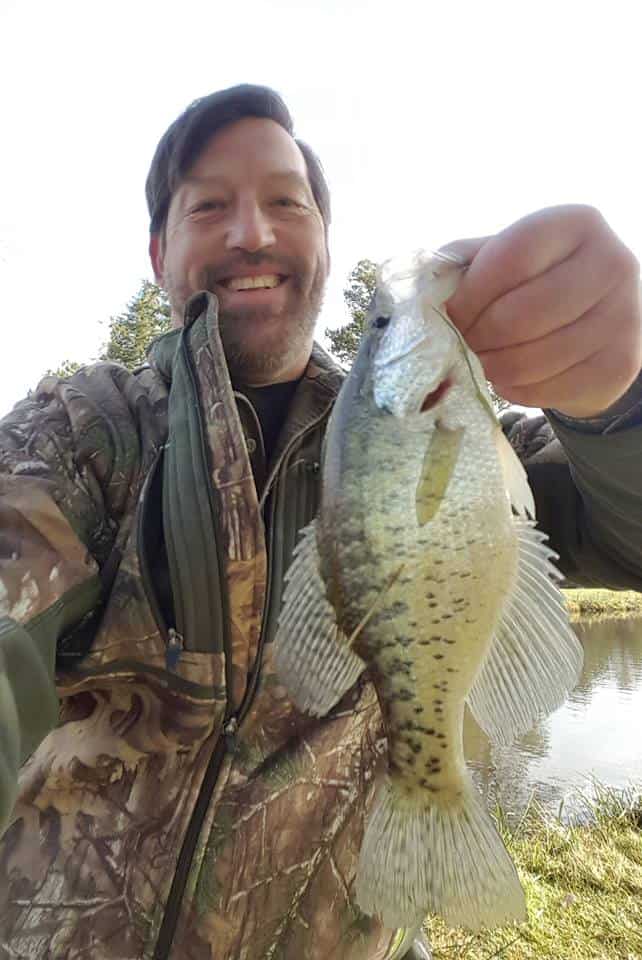
In fact, there’s quite a good fall fishery for crappie and other panfish here, even for bank anglers, into the colder months.
Speaking of colder months, WDFW tends to dump in thousands of hatchery trout, typically during the winter only. January through March or April are likely your best trout-fishing months.
The trout will fall to relatively shallow trolling or bait-fishing techniques, but don’t expect this fishery to stretch into the summer here like it will at the reservoirs on the Lewis and Cowlitz rivers. Silver just gets too warm.
More: Fishing at Silver Lake in Cowlitz County
Toutle River
This river system is located in northern Cowlitz County and is a major tributary of the Cowlitz River.
Parts of the Toutle system were devastated by massive debris flows caused by the 1980 eruption of Mount St. Helens, but the system has been working its way back into healthier fish habitat over the decades.
The Toutle has two main forks and also some significant tributaries, including the Green River flowing into the North Fork Toutle.
The Toutle’s forks and tributaries offer some fair fisheries for salmon and steelhead, but like most systems in the region have been less-than-stellar in recent years due to a variety of factors including natural boom and bust cycles.
Salmon harvests may be allowed during better run years, so watch the WDFW for updates.
The forks and tributaries, especially the clearer ones including the Green, have modest populations rainbow and sea-run and resident cutthroat trout, but you must release all wild trout.
Yale Lake
This 3,600-acre reservoir on the North Fork Lewis River is primarily fished for kokanee.
This reservoir, located between two other big impoundments, is shared with Clark County.
It’s a little more than a half hour’s drive east on Highway 503 from Woodland at Interstate 5.
The land-locked sockeye salmon are tasty and at times can be caught in good numbers.
Kokanee fishing at the reservoir, also known as Yale Lake, ramps up by about the middle of spring and continues through summer.
Kokanee fishing is nearly always a boat show.
In the early months, kokanee will be fairly shallow and can be caught trolling small spoons, hootchies and other lures. Most anglers tie those below blades or flashers to attract fish attention.
You’ll use the same types of set ups in the heat of summer, but you’ll need weight or a down-rigger to reach the schools, which run deeper as the surface water warms.
Yale has a moderate number of trout that drop in from tributaries, primarily coastal cutthroat trout. Near the mouth of Siouxon Creek is one spot to look for them.
The reservoir also is home to some bull trout, which along with dolly varden are protected and must be released unharmed if caught incidentally.
PacifiCorp maintains several boat ramps, but these may be out of the water when levels are well down, usually later in the season.
More: Yale Lake Fishing
Wahkiakum County Fishing
Columbia River
See our listing above and the fishing opportunities are similar for both counties.
Deep River
The lowest sections of this very short western Wahkiakum County river, including a lower slow-moving slough of a section that flows into Grays Bay, offer a mixture of warmwater fish such as bass and panfish and some sturgeon holes.
Salmon and steelhead runs are limited, but a modest number of fall Chinook are bagged here in the late summer.
Elochoman River
This river flies under the radar for anglers outside of the lower Columbia River area, but it’s the best stream located primarily in Wahkiakum County.
Locals know it as a reliable hatchery-fortified winter steelhead stream that’s not as busy as the Cowlitz or Kalama.
The Elochoman is a relatively short river, originating in the soggy hills of Southwest Washington and flowing into a slough and then the Columbia River northwest of Cathlamet.
The Elochoman is known for its winter steelhead fishing, with best catches generally coming on the early side, peaking in December and early January.
Of course, catches here have mirrored recent lower success rates in other Columbia tributaries, but this is a good spot to have on your radar.
Hatchery fall Chinook salmon may be retained but fairly low catches have been reported in recent years.
There is a limited fishery for cutthroat trout, including sea-runs, which are no longer planted in the stream.
Grays River
This is a small river system of modest interest to anglers, with some salmon (including Chinook and chum), steelhead and cutthroat trout present.
Grays River’s watershed drains much of the county and spills into Grays Bay just east of Deep River.
Salmon catches can be moderate when the runs are good. A few years ago, there were a few dozen Chinook tagged and a bit more coho (the latter mostly in the West Fork). Best salmon catches were in October.
Steelhead catches have been very modest here in recently years, mostly consisting of a handful of winter-run fish.
There are lots of sections of river with varying regulations, so study up before fishing.
Skamokawa Creek
This short stream entering the Columbia River by the community of the same name has been known to put out a few steelhead for a mostly local contingent of anglers.
It’s not currently stocked but you are legally allowed to retain any fin-clipped hatchery steelhead that may stray into the creek, which flows next to Highway 4 in about the lowest mile or so after bringing its forks together.
There should be a few cutthroat trout around as well, including sea-runs in the late summer or early fall, but pay heed to regulations.
At the lowest end near Skamokawa, there is a slough that might contain any of the bass and panfish species found in other Columbia River backwaters.
Fishing in Neighboring Counties
Lewis County: To the north, the best salmon and steelhead fishing on the Cowlitz River plus excellent trout, bass and other fishing.
Skamania County: To the east, salmon, steelhead and more in the Columbia River and tributaries, plus some very good trout and bass lakes.
Clark County: To the south, lower Columbia River salmon, sturgeon and walleye plus nicely stocked trout and bass lakes.
Pacific County: To the west, lower Columbia River and Willapa Bay salmon, crabbing and more on Washington’s southern coast.
Washington Resources
WDFW Fishing and Stocking Reports
WDFW Fishing Regulations
National Weather Service forecasts

